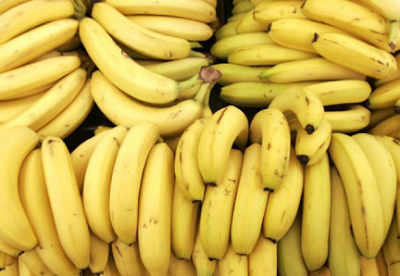The best method for Cerebral Palsy is to help children get self-care ability or do some simple works in the society. Cerebral Palsy treatment by Chinese medicine is a good choice without side effects. http://www.cpchildrentreatment.com/
Sunday, August 23, 2015
Foods for Children With Cerebral Palsy
Today’s final edition on special needs diets is focused on cerebral palsy. Children with cerebral palsy may have a harder time getting sufficient nutrients due to the physical difficulties of chewing and swallowing.
Ensuring a proper diet is extremely important. First, we will cover brain physiology and the most common physical symptoms associated with cerebral palsy. Food choices can help or worsen some physical symptoms and knowing which ones should be a steady part of the diet and which ones to avoid can have a tremendous impact.
Cerebral palsy refers to several neurological disorders that appear in infancy or early childhood and affect muscle coordination and movement.
According to Harvard Medical School, it is caused by brain abnormalities that disrupt the ability to control movement and posture. Cerebral palsy manifests as brain lesions that occur before the age of 3.
These brain lesions are a result of damage before, during or after birth and the symptoms can range from mild, where no special assistance is required, to severe and requiring lifelong care. It is the leading cause of childhood disability that affects bodily function and development.
Specific brain lesions may affect the ability to move the face, mouth and head, creating difficulties with chewing and eating. Because chewing can be affected, the main goal in a diet is to provide high quality foods that are easy to eat or drink.
Proper nourishment is the main concern for children with cerebral palsy. According to the MyChild organization, up to 35 percent of children with cerebral palsy are malnourished. This slow down growth and make gaining weight difficult.
Healthy, high calorie foods are especially important since it can be difficult for many children to physically eat enough to meet their nutrition requirements. Constipation and acid reflux are the most common physical symptoms. This is due to poor muscle tone that affects the ability to push stool through the colon and of the lower esophageal sphincter, which causes the stomach’s contents to wash back up into the esophagus causing acid reflux.
Make every bite count. Limit processed foods with low nutritional value as much as possible and focus on calorie dense, nutritious foods and high quality fats.
Consider adding calorie rich smoothies to the daily diet containing high calorie fruits (bananas, dates, mangos, avocados) and green leafy vegetables along with powdered greens for extra vitamins.
Healthy fats such as nut butters, coconut milk, and coconut oil will also instantly increase nutrition and calorie count and can be added to smoothies or used as a spread on bread.
Leafy greens such as kale, spinach and collards can be added to smoothies and also shredded and added to almost any food: meatballs, pasta, casseroles and sauces. Leafy greens will add extra vitamins and minerals as well as fiber and bulk which can help with constipation.
Make pre- and pro-biotics a regular part of the diet to help build healthy bacteria in the gut and help relieve constipation. Some great choices include cultured dairy products (kefir, yogurt), sauerkraut, kimchi, bananas, honey and whole grains.
Because constipation and acid reflux are due to poor muscle tone, trigger foods can be difficult to identify. Avoiding foods that can add to constipation and acid reflux is the best option since these symptoms will likely not be completely eliminated.
Low fiber foods tend to cause the most trouble with constipation, such as highly processed snack and junk foods, fried food, too much red meat, ice cream and cheese. These foods are also low in nutritional value and should be replaced with healthy alternatives that provide important fiber, vitamins and minerals.
To reduce the likelihood of acid reflux, avoid citrus fruits, spicy foods, garlic, onions, fatty cuts of meat and carbonated beverages.
Experiment with different combinations until you find some options that work for your lifestyle and tastes. Adding vegetables to foods that are easy to eat will ease the preoccupation of not getting enough nutrition.
Sometimes, making just one small tweak can change the entire flavor profile and turn a tolerable food into a delicious one. Remember to start slow, and over time increase the amount of veggies in smoothies and foods. Making slow changes can help change the palate to tolerate a greater amount of healthy food as well as give the digestive system time to adjust to a new diet.
Jacqueline Banks is a certified holistic health counselor and busy mama. Her focus is on helping other busy moms in all stages of motherhood keep themselves and their little ones healthy and happy. She uses natural and organic solutions to solve individual health problems and promote clean living.
Jacqueline Banks is a certified holistic health counselor and busy mother. Her focus is on helping other busy moms in all stages of motherhood keep themselves and their little ones healthy and happy. She uses natural and organic solutions to solve individual health problems and promote clean living.
Subscribe to:
Post Comments (Atom)


No comments:
Post a Comment